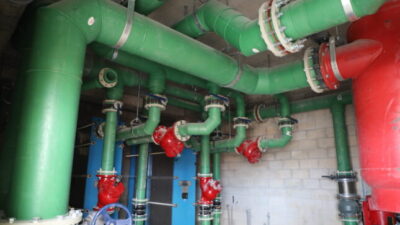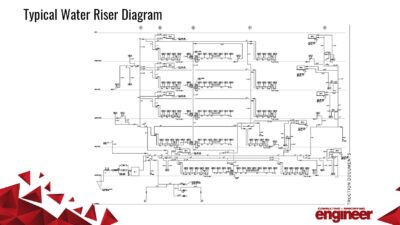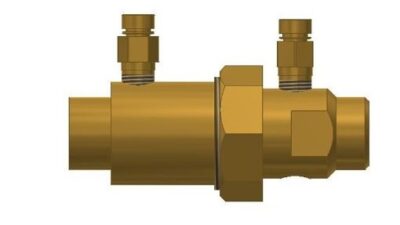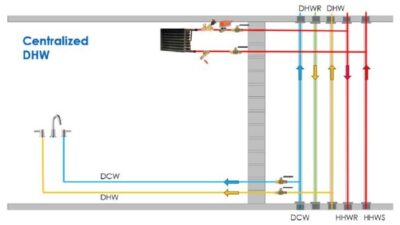New construction: Sangre de Cristo; M.E. GROUP

Project name: Sangre de Cristo
Location: Mosca, Colo.
Firm name: M.E. GROUP
Project type, building type: New construction, school (K-12)
Project duration: 3 years
Project completion date: Feb. 29, 2012
Project budget for mechanical, electrical, plumbing, fire protection engineering only: $7.2 million
Engineering challenges
The design team considered many challenges as we kicked off this project—not least that class sessions occur in this facility during the harshest time of the year. As this climate region (6B) is a heating-dominated climate, we knew we needed a well-insulated building and could introduce passive solar strategies, but also knew we would need some form of heating in the building. With a climate similar to that found in Calgary, Alberta (over 1,000 miles north), heating became the primary challenge on this project. With the strong presence of true geothermal resources in this region, we spent considerable time exploring this option.
The team approached design thinking that if we could tap into the essentially free hot water source underground and use a direct-use geothermal system, then the only energy we would have to expend to heat the building would be the pump power, resulting in an extremely low energy use for the building. After discussions with the Department of Energy, we found the cost of extracting and then reinjecting the water back down 3,000 to 5,000 ft below the surface just wasn’t feasible for a project of this size. Our strategy would have made sense for a much larger application with a faster return on investment. Somewhat stumped, we started looking at what utility options were available. With Sangre De Cristo being in such a rural location, there was no natural gas supply in the area. Buildings rely on either propane or electricity to heat their space. The school district has experienced extremely high propane costs over the years, and they continue to escalate rapidly. It was clear that propane wasn’t a very responsible long-term choice as the primary heating system.
Solutions
We needed another solution. After ruling out these two options, we steered toward an electric solution to the heating problem. Despite getting a few curve balls thrown at us with the true geothermal system, we did find another resource in the region, which was the soil itself. Because of the runoff from the mountains surrounding this valley, there is a really high water table and a nearly constant churn of water just a few feet below the surface. Our engineering minds went to work, and as engineers know, water is a great heat transfer medium. So, we connected the use of the really good thermal conductivity in the soil with the use of a horizontal geothermal system. Going horizontal instead of vertical saved about $250,000 on the project and provides excellent performance with the high water table. Located about 12 ft below the surface, we coupled the geothermal system with water heat pumps to generate hot water for the building and then simply pipe the hot water to perimeter baseboard heating elements located throughout the building. There was our heating solution.
The cooling requirements for the building are so minimal that we had the opportunity to combine the cooling system with the ventilation system. We supplied outside air in most of the spaces with displacement ventilation and keep that temperature at about 65 to 68 F. After performing an analysis, we found that the amount of air required to cool a space rarely exceeds the amount of air required to ventilate a space. So that same system allowed us to do both and respond to a detection of high carbon dioxide or call for space cooling. We positioned a few water-to-air heat pumps sprinkled throughout the building for some of the higher-load spaces, but primarily our cooling is accomplished with evaporative cooling and an energy recovery ventilator, ducted to the space with displacement ventilation. Project successes include: 51% energy cost savings above ASHRAE 90.1 2007, 80% projected energy cost savings for the district, and projected energy use of 22.1 kBtu/SF/yr (four times better than average for Colorado schools).
Additional information
For more project details, view a presentation by the M.E. GROUP on the Sangre de Cristo.
View a video from the M.E. Group on the challenges posed by the Sangre de Cristo.



